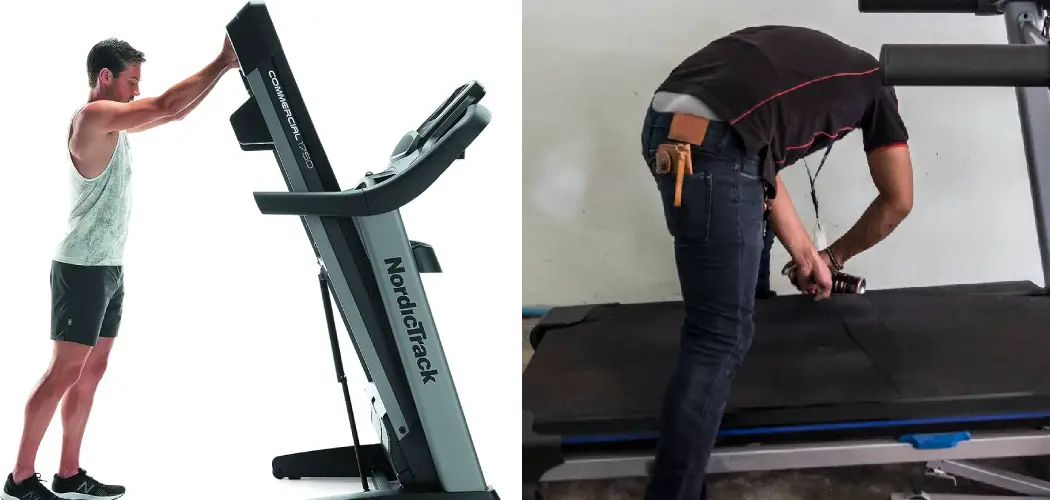Are you fed up with the loud squeaking sound when you exercise on your treadmill? Hearing that horrid noise can be extremely irritating – it’s no wonder why so many people give up on this essential piece of equipment.
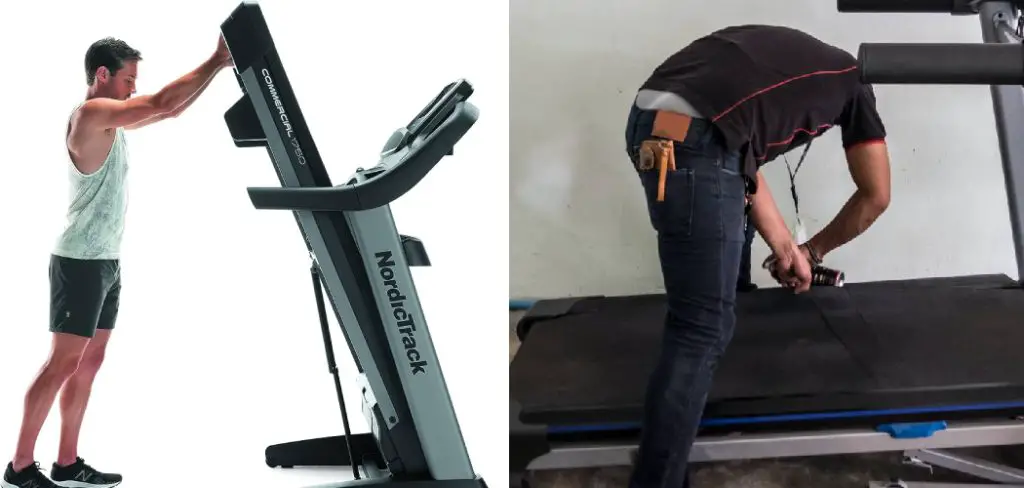
But don’t give up hope just yet! In this blog post, we’ll discuss how to fix a squeaky treadmill and help make your workout experience enjoyable again. We’ll go through some easy-to-follow steps to identify the source of the noise and get your machine back in tip-top shape in no time! So grab a toolbox and let’s get started!
Squeaky treadmills can be incredibly annoying and embarrassing, but have no fear – there is an easy solution! In this blog post, we will walk through how to quickly and effectively fix the dreaded squeaks coming from your treadmill. So if you’re ready to say goodbye to those pesky squeaks once and for all, read on – because after following these steps, you’ll be enjoying quiet workouts again soon!
What Causes Squeaky Treadmill?
1 . Loose Screws
The most common cause of a squeaky treadmill is usually attributed to loose screws or bolts. Over time, the screws and bolts that hold the frame together may become lose due to vibration from running on the machine. To fix this problem you will need a screwdriver or Allen wrench set depending on the type of fasteners used to assemble your treadmill.
2 . Belt Tension
In some cases, a squeaky noise is attributed to the belt drive system. This normally happens when the belt tension is too low and it needs to be adjusted. You can use a wrench or screwdriver to tighten the bolts on the rear roller, which should take care of any belt issues you may have.
3 . Lubrication
Squeaks can also be caused by a lack of lubrication on the moving parts. Use a silicone-based lubricant to spray any squeaky parts or belts. Doing this at least once per month will ensure your treadmill is running smoothly and without any noise.
4 . Motor Maintenance
Finally, if the squeak is coming from underneath the treadmill, it could be related to the motor. Make sure you check with your manufacturer’s instructions for proper maintenance of your motor and use any recommended lubricant to avoid any further squeaks or motor issues.
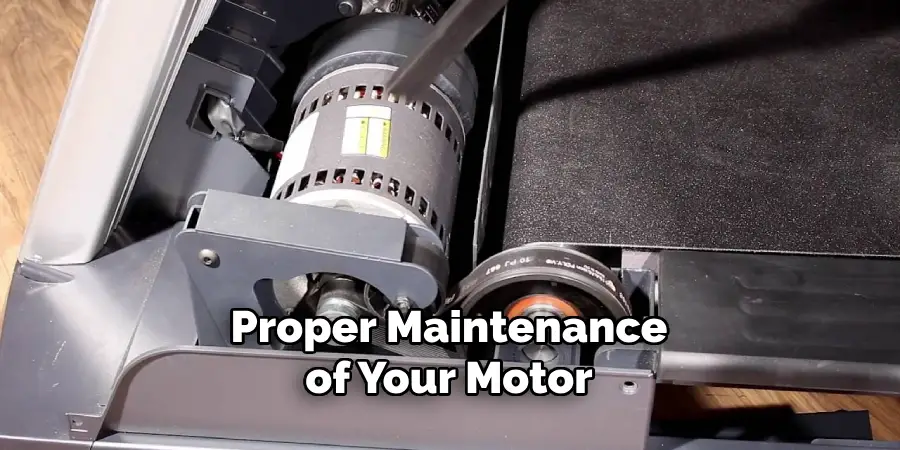
Treadmill maintenance is an important part of keeping your machine running smoothly and safely.
11 Tips on How to Fix a Squeaky Treadmill
1 . Check the Belt
One of the first things to check if your treadmill is squeaking is the belt. The belt can become loose, worn, or misaligned over time which can cause a squeak. To access the belt, you’ll need to remove any covers and/or panels that may be in place and then use a ruler or measuring tape to measure the distance from the edge of the belt to the frame. To fix a loose or worn belt, you’ll need to adjust it and/or replace it.
2 . Tighten Any Loose Screws
Treadmills have many moving parts that can become loose over time. Check for any screws or bolts on your treadmill that may be loose, as this can be a common cause of squeaks. Tighten any loose screws and bolts you find, making sure to use the right size tool for each one.
3 . Lubricate Moving Parts
Another possible cause of squeaking is dry or worn parts. To fix this, you’ll need to lubricate all moving parts on your treadmill with a lubricant specifically designed for treadmills. This will help reduce friction and get rid of any squeaks.
4 . Check the Pedals
Squeaks can also be caused by the pedals on your treadmill. If you hear a squeaking noise when you’re running, it’s likely coming from the pedals. Inspect them to see if there are any cracks or wear and tear. If so, replace the pedals as soon as possible to avoid further damage.
5 . Inspect the Motor
If the squeak is coming from the motor area of your treadmill, you’ll need to inspect it more closely. Check for any loose parts, debris, or corrosion around the motor. You may need to take the motor apart in order to find and fix the source of the squeaking.
6 . Clean and Re-Grease Bearings
Many treadmills have bearings that can become dry or corroded over time, leading to squeaks. If this is the case, you’ll need to remove these parts and clean them thoroughly. Once you’ve done this, re-grease the bearings to help keep them lubricated and reduce any squeaking.

7 . Check for Worn Out Parts
Some parts of a treadmill, such as the rollers and pulleys, can wear out over time due to regular use. If these parts are worn out, they may cause squeaking. To fix this, you’ll need to replace any worn-out parts with new ones.
8 . Balance the Rollers
If your treadmill’s rollers are out of balance, they may cause a squeak as they move across the belt. To fix this, you’ll need to adjust the rollers so that they’re properly balanced.
9 . Check for Alignment Issues
If your treadmill is squeaking, it may also be due to misalignment issues. To check, you’ll need to inspect the deck and make sure that it’s properly aligned with the frame and rollers. If not, adjust it as necessary to get rid of any misalignment issues.
10 . Check the Cushioning System
The cushioning system on your treadmill can also be a source of squeaking. If you hear any noises coming from here, it’s likely due to worn-out or misaligned parts. To fix this, you’ll need to inspect the cushion and make sure that it’s properly aligned and in good working order.
11 . Test the Motor
Once you’ve inspected all of the parts on your treadmill, it’s a good idea to test out the motor to make sure everything is running smoothly. If the motor is faulty or not properly lubricated, it could be causing the squeaking noise.
Frequently Asked Question
What Precautions Should I Take Before Repairing My Treadmill?
It is important to always abide by the safety precautions given in your treadmill’s manufacturer’s instruction manual. This will help keep you safe from any potential electrical shocks or injuries. Additionally, make sure to unplug the machine before attempting any repairs!
How can I Lubricate My Treadmill’s Moving Parts?
To lubricate the moving parts on your treadmill, first you will need to locate the rails that support the running belt. Then, check for tightness and make sure the bolts are secure. After that, use a silicon-based spray lubricant or petroleum jelly on all moving parts including screws, nuts and bolts.
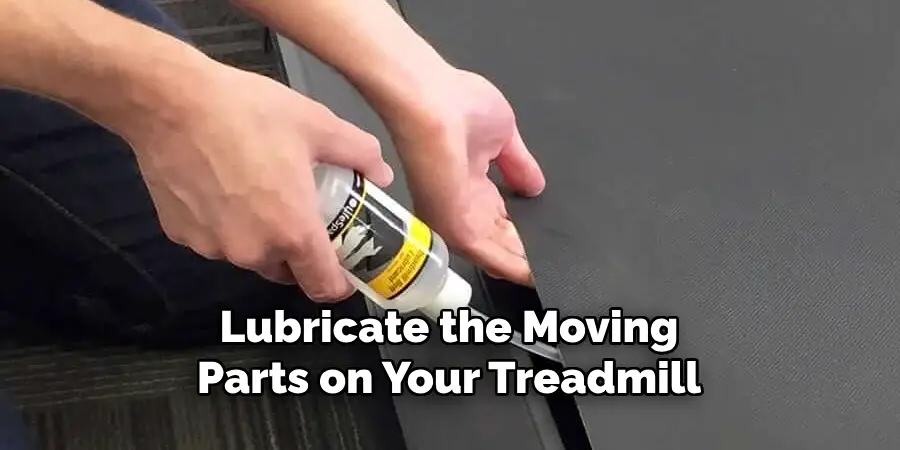
What Do I do if My Treadmill is Still Squeaking?
If lubrication does not seem to be helping the problem, it may be a sign that your treadmill’s motor needs to be replaced. In this case, you should refer to your manufacturer’s manual and contact customer service for further assistance. They can help you determine if a new motor is necessary and provide instructions on how to replace it.
Can I Replace My Treadmill’s Motor Myself?
Replacing the motor in your treadmill can be a complicated task that requires some technical know-how. If you feel confident enough to do this repair yourself, make sure to have all the tools and supplies you need before starting the job. Otherwise, it is recommended to consult a professional who can help you do this repair safely and correctly.
Are There Any Other Troubleshooting Tips to Consider?
If your treadmill belt is squeaking or if the motor appears to be running slowly, make sure to check that the belt isn’t loose by adjusting the tension. Additionally, make sure to check the power cord, and look for any signs of wear and tear or loose connections that can be causing the motor to run slowly.
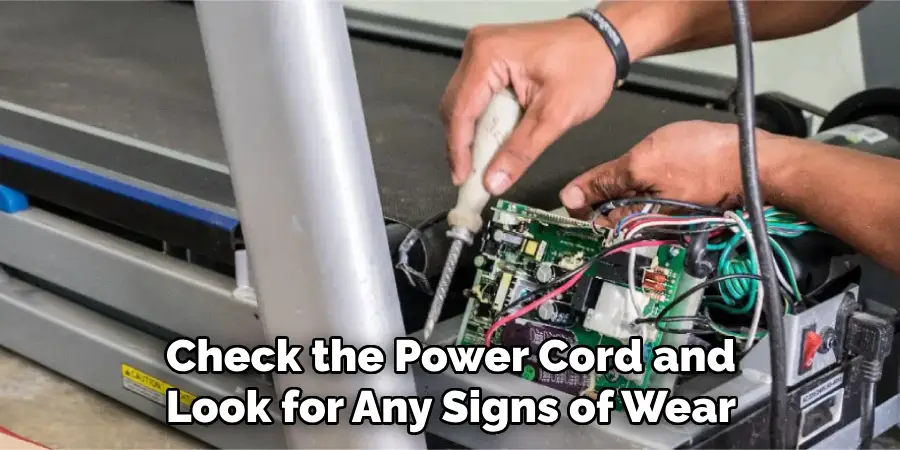
Finally, keep in mind that if your treadmill is still squeaking after all these tips have been taken into consideration, it may be time to replace the belt or motor entirely. It’s important to always consult your manufacturer’s manual for specific instructions on how to address these issues.
By following these simple steps, you can get your treadmill running quietly and smoothly again in no time! With regular maintenance and care, you can ensure that your treadmill will last a long time and help keep you in shape for years to come.
Conclusion
Fixing a squeaky treadmill doesn’t have to be a daunting task. With the right tools and some patience, you can make your workout experience much more enjoyable. After all, it’s nice when you can focus on the run without distractions.
Hopefully these tips have been helpful in providing you with the insight and information needed to fix a squeaky treadmill once and for all. Just remember that if you don’t feel comfortable tackling this task on your own, it is always wise to consult with a fitness professional for proper guidance and assistance.
Now you know how to fix a squeaky treadmill! In addition, if your treadmill is under warranty, consider having them take care of repairs as part of their customer service agreement. All in all, an occasional squeak or wobble shouldn’t put a damper on your running routine – take action against these minor issues today so you can resume tracking those miles with ease!

